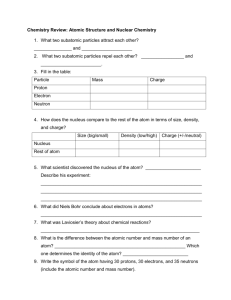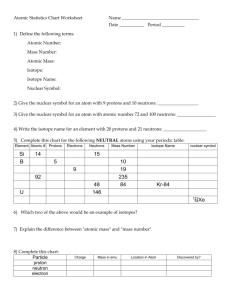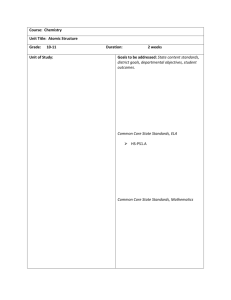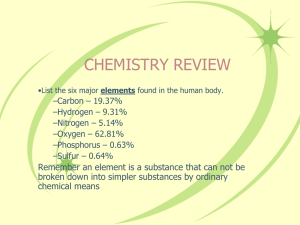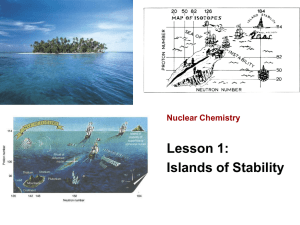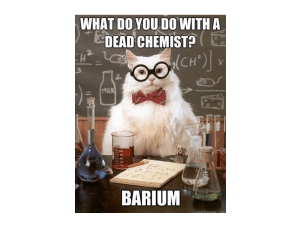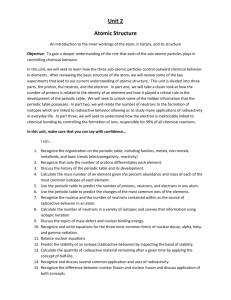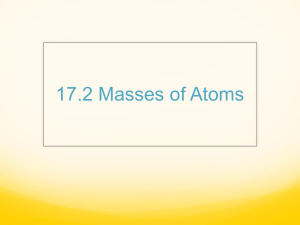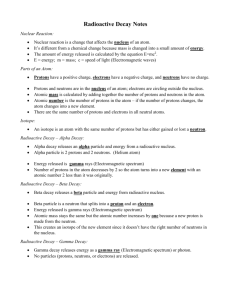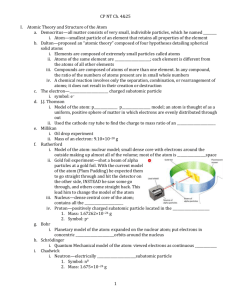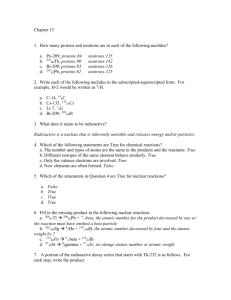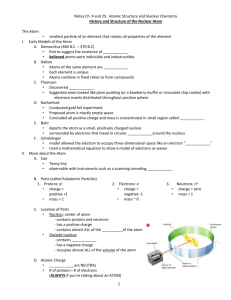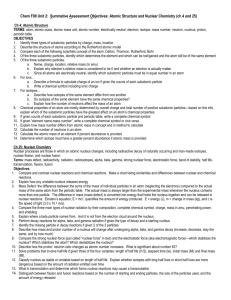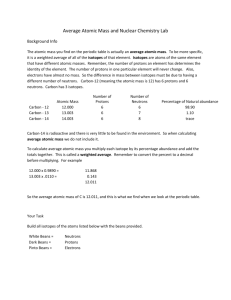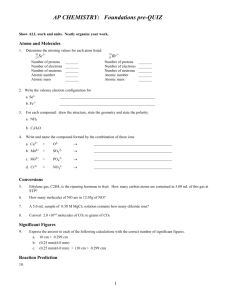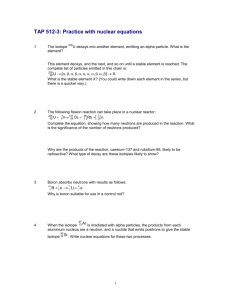Test Objectives for Unit 3: Atomic Structure & Nuclear Chemistry
advertisement
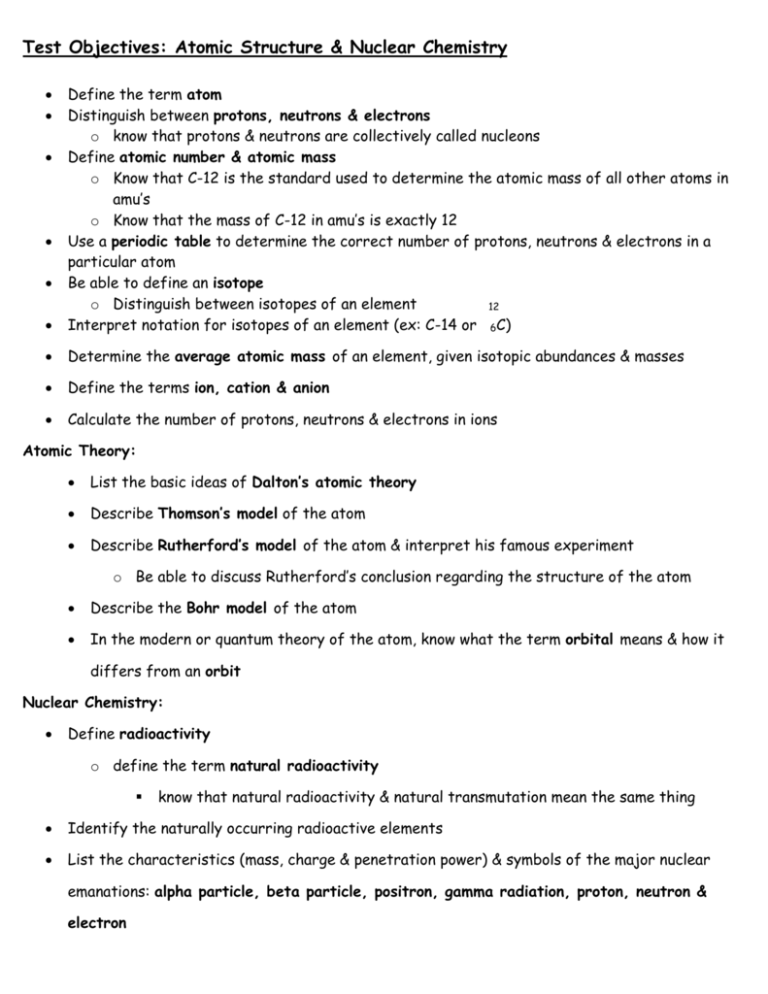
Test Objectives: Atomic Structure & Nuclear Chemistry Define the term atom Distinguish between protons, neutrons & electrons o know that protons & neutrons are collectively called nucleons Define atomic number & atomic mass o Know that C-12 is the standard used to determine the atomic mass of all other atoms in amu’s o Know that the mass of C-12 in amu’s is exactly 12 Use a periodic table to determine the correct number of protons, neutrons & electrons in a particular atom Be able to define an isotope o Distinguish between isotopes of an element 12 Interpret notation for isotopes of an element (ex: C-14 or 6C) Determine the average atomic mass of an element, given isotopic abundances & masses Define the terms ion, cation & anion Calculate the number of protons, neutrons & electrons in ions Atomic Theory: List the basic ideas of Dalton’s atomic theory Describe Thomson’s model of the atom Describe Rutherford’s model of the atom & interpret his famous experiment o Be able to discuss Rutherford’s conclusion regarding the structure of the atom Describe the Bohr model of the atom In the modern or quantum theory of the atom, know what the term orbital means & how it differs from an orbit Nuclear Chemistry: Define radioactivity o define the term natural radioactivity know that natural radioactivity & natural transmutation mean the same thing Identify the naturally occurring radioactive elements List the characteristics (mass, charge & penetration power) & symbols of the major nuclear emanations: alpha particle, beta particle, positron, gamma radiation, proton, neutron & electron o Be able to write equations for the generation of alpha particles, beta particles & positron particles o Be able to describe towards which electrode (+/-) particles will move when a radioactive beam is passed between them Be able to determine the decay mode of a specific isotope using your reference tables o Be able to determine the decay mode from a nuclear reaction when given the natural transformation of one element to another o Be able to explain what a decay series is o Be able to write & balance nuclear equations for natural transmutations Define natural transmutation o Know the difference between natural & artificial transmutation o Know how to identify, write & balance nuclear equations for both types Define half-life o Solve problems using half-life Be able to calculate how much material remains after some specific number of half-lives Given the starting amount of material & the ending amount of material determine the number of half-lives that have passed Be able to calculate half-life given time passes & starting & ending amounts of material o Know that half-life is not affected by either temp or how much of the element is present Solve problems involving half-life and fraction remaining Know the difference between fission & fusion o Identify fission & fusion equations based on their nuclear equations Understand the benefits & dangers of radioactive isotopes o Know the medical benefits of I-131 for thyroid disorders, Tc-99 for brain tumors & Co60 for certain cancer treatment & detection Know that all isotopes above atomic number 83 are all radioactive
